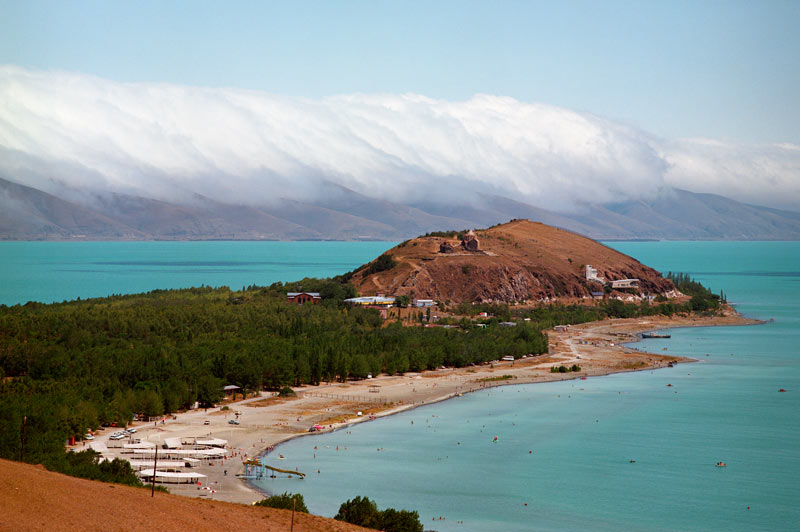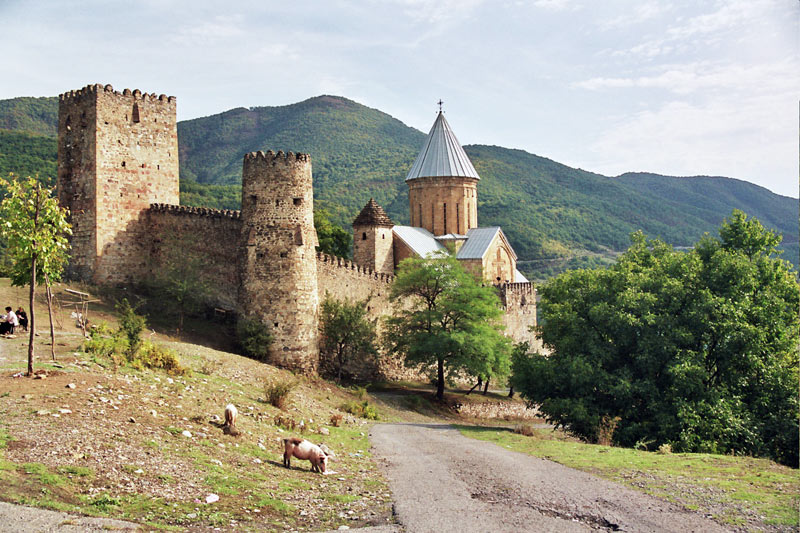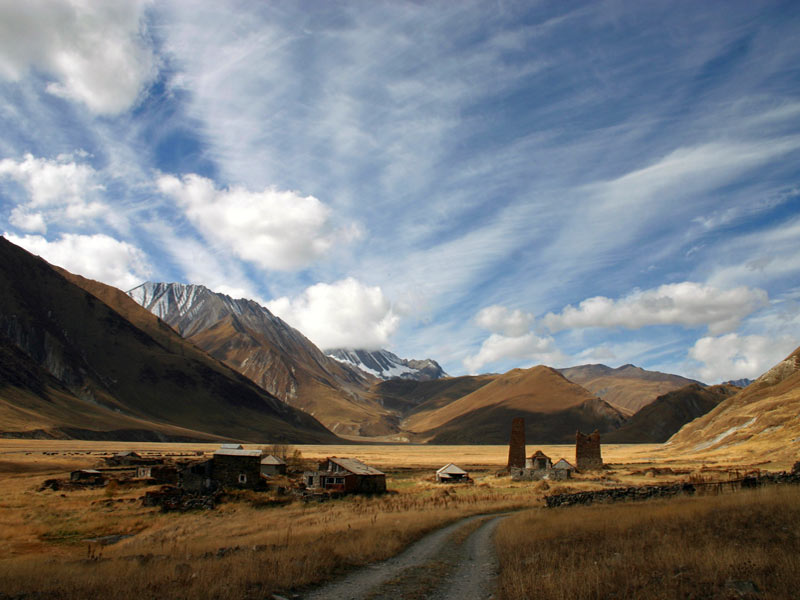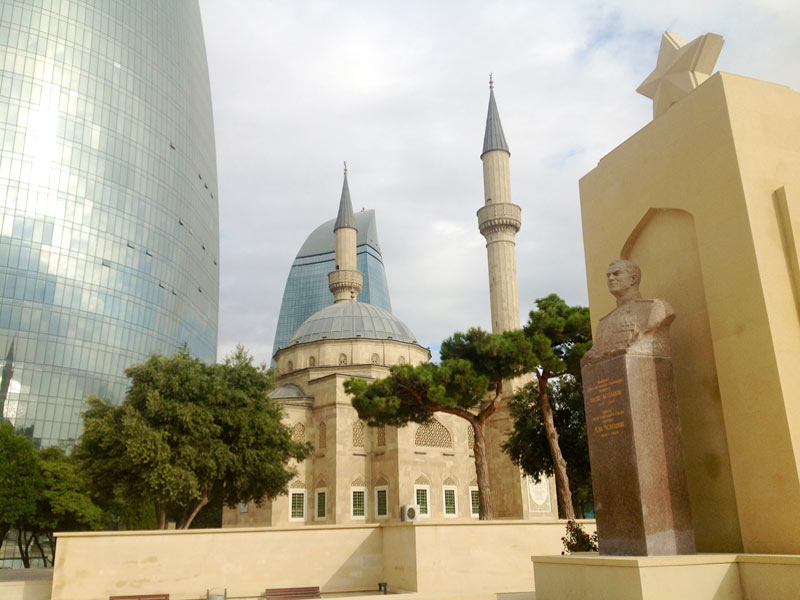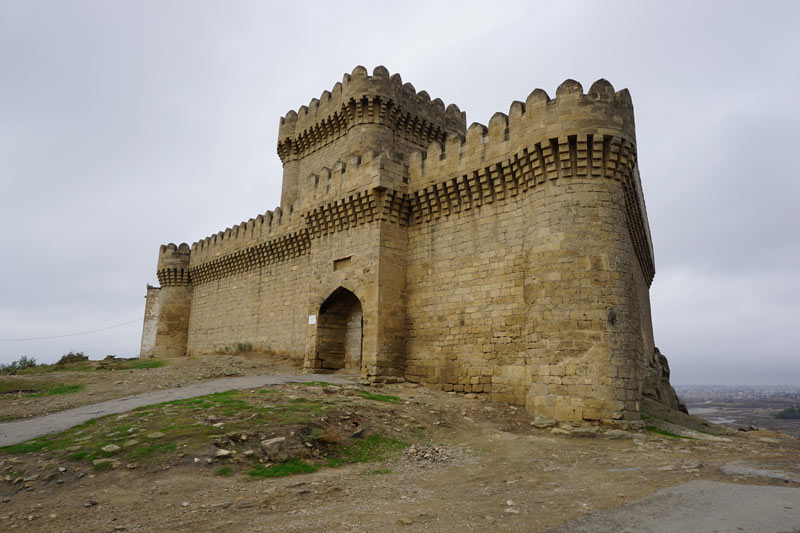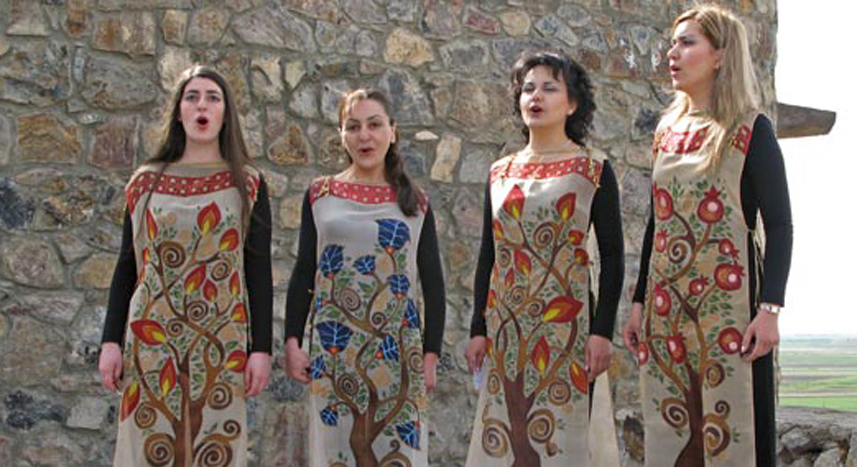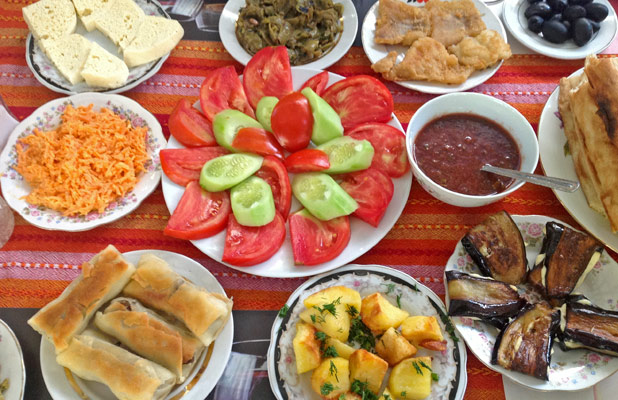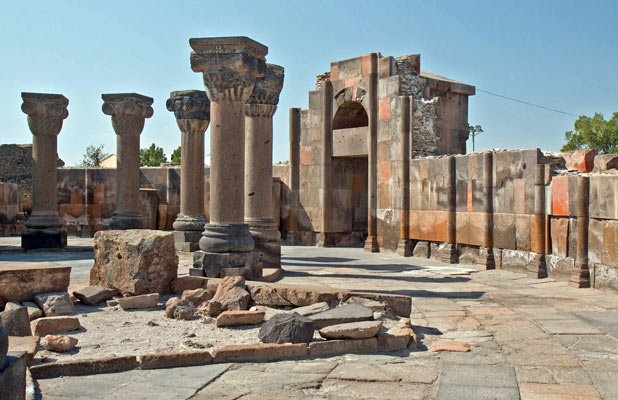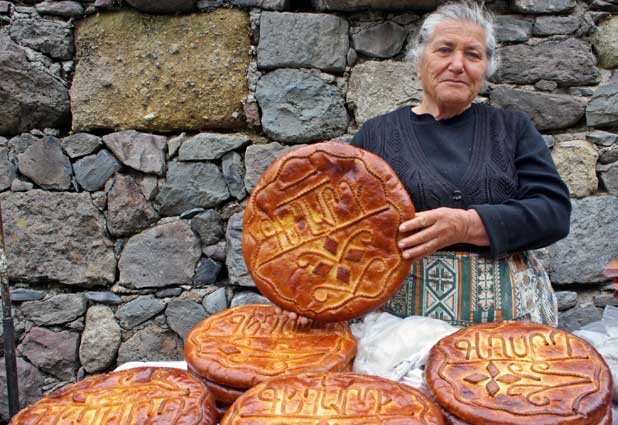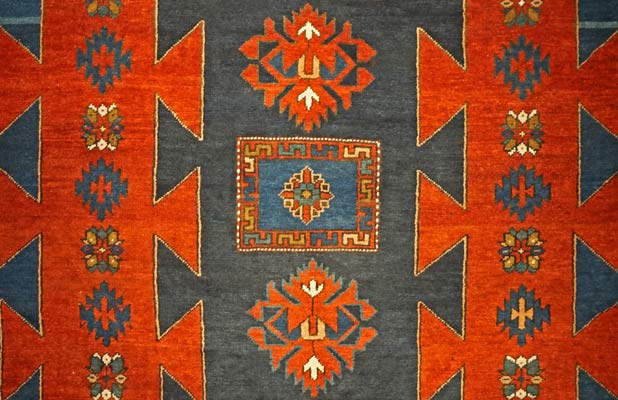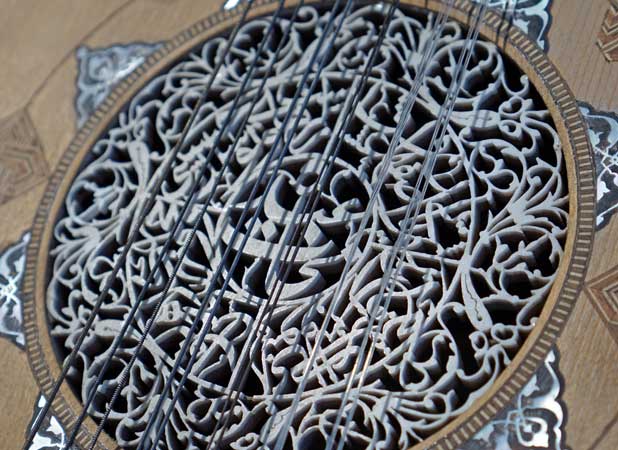Studded with UNESCO-listed World Heritage sites and cultural treasures, the South Caucasus countries of Georgia, Armenia, and Azerbaijan are home to dozens of languages, religions, landscapes and musical styles, with eight UNESCO World Heritage Sites – from Geghard Monastery to Svaneti’s ancient watchtowers – along with 22 UNESCO cultural treasures – from carpet weaving to spine-tingling polyphonic singing.
Look and Listen: Georgia, Armenia and Azerbaijan
Words just don’t do justice to this part of the world; this video gives a glimmer of what it’s like in these South Caucasus countries, focusing on MIR’s favorite you-must-experience UNESCO-designated places, handmade crafts and cultural traditions: unfamiliar mountain-and-valley destinations, flavorful foods and organic wines, and a lively spirit of hospitality.
SOUTH CAUCASUS COUNTRIES: A UNESCO TRAVEL GUIDE
For more than 30 years, MIR has been smitten with these South Caucasus countries, declaring Georgia, Armenia and Azerbaijan as must-see destinations, still relatively undiscovered by the rest of the world. Located south of Russia and north of Turkey and Iran, these countries are neighbors in the “melting pot” region of Europe and Asia.
Georgia, Armenia and Azerbaijan are wedged between the Black and Caspian seas
Map credit: Map Data © 2017 Google
Their wines, cuisines, cultures and natural beauty make it, according to many travelers, the quintessential destination – “the best of the best.” Here’s a deeper look at the UNESCO Sites that make Georgia, Armenia and Azerbaijan so memorable and distinct:
Dozens of brilliantly colored frescoes adorn the walls and ceilings of Gelati Monastery
Photo: Paul Schwartz
GEORGIA
GELATI MONASTERY (UNESCO Site)
Founded more than 900 years ago in western Georgia, Gelati Monastery not only was one of the largest Orthodox monasteries in medieval times, but also a bustling center for science and education. Its frescoes, murals and mosaics are remarkably well preserved, reflecting the richness of Georgia’s Golden Age from the 11th to the 13th century.
UNESCO-listed Svetitstkhoveli Cathedral in Mtskheta, Georgia
Photo: Inga Belova
HISTORICAL MONUMENTS OF MTSKHETA (UNESCO Site)
Not far from Tbilisi – where the Aragvi and Mtkvari rivers merge – are the UNESCO-designated world treasures of Mtskheta’s Jvari Monastery, Svetitstkhoveli Cathedral and Samtavro Monastery. Reflecting its religious significance since medieval times, in 2014 Mtskheta was named “Holy City” by the Georgian Orthodox Church.
Hundreds of medieval watchtowers dot the remote landscape of Svaneti
Photo: Paul Schwartz
UPPER SVANETI & WATCHTOWERS (UNESCO Site)
Svaneti’s remoteness in mountainous Georgia has helped preserve its traditions and culture for thousands of years. Most recognizable are its 12th century watchtowers, protecting their occupants from avalanches, floods and invaders.
A Georgian winemaker dips into a qvevri, a UNESCO-listed ancient method of making wine
Photo: John Wurdeman
NATURAL WINE-MAKING (UNESCO Culture)
Georgia’s sought-after wines are made according to time-honored methods that date back some 8,000 years. Even today, traditional Georgian winemakers still ferment, age, and store their wines the old-fashioned way, using giant earthenware vessels called qvevri.
POLYPHONIC SINGING (UNESCO Culture)
These ancient mesmerizing melodies are built on harmonic scales based on fifths, not octaves – making it sound slightly dissonant to Western ears.
A Georgian table, full of delicacies with Iranian and Turkish influences
Photo: Michel Behar
If You Have More Time in Georgia
“GEORGIAN TABLE” FEAST – SUPRA
An authentic Georgian Table – known as a supra – is an hours-long feast with food, wine, toasting, and singing. Dish upon dish is piled high, with an abundance of local specialities such as juicy meat dumplings (khinkali), cheese-filled bread (khachapuri), stuffed eggplant and hen roasted in rose petals.
GEORGIAN ALPHABET
Look closely at the loopy and cursive letters of Georgian words, and appreciate their UNESCO-listed designation for its three writing systems: Asomtavruli, Nuskhuri, and Mkhedruli.
7th-century ruins of UNESCO-listed Zvartnots Cathedral in Armenia
Photo: Richard Fejfar
ARMENIA
CATHEDRAL & CHURCHES OF ECHMIADZIN AND RUINS OF ZVARTNOTS (UNESCO Site)
Even today, Echmiadzin is the spiritual center of the Armenian Church, its importance reflected in 5th-century Echmiadzin Cathedral. Zvartnots was built two centuries later, intended to surpass the glory of Echmiadzin.
GEGHARD MONASTERY & UPPER AZAT VALLEY (UNESCO Site)
The acoustics are astonishing inside 13th-century Geghard Monastery, carved into the side of a mountain in a remote spot beside the Azat River in Armenia. Listen to this a cappella performance in the video above, showcasing not just the acoustics, but the masterful carvings and candles that evoke a spiritual sense of place.
Armenia’s Sanahin Monastery and its companion, Haghbat Monastery, are UNESCO World Heritage Sites
Photo: Martin Klimenta
HAGHPAT AND SANAHIN MONASTERIES (UNESCO Site)
Founded in the 10th century, these fortified monasteries were literary, artistic and educational centers as well as monastic compounds – outstanding examples of Byzantine church architecture blended with local Caucasian architecture of that period.
A bread vendor outside Geghard Monastery in Armenia
Photo: Devin Connolly
ARMENIAN BREAD – LAVASH (UNESCO Culture)
Bread in Armenia – and throughout the South Caucasus – is a cultural treasure in its preparation, its historical significance and even in its appearance from town to town and region to region.
About 40,000 kachkars still exist in Armenia – some more than 1,000 years old
Photo: Jake Smith
CROSS-STONES ART: KHACHKARS (UNESCO Culture)
Khachkars are intricately carved stone crosses that are distinct to Armenia, dotting its hillsides and valleys. Details such as flowers, leaves, rosettes and grapes often adorn these memorial crosses.
If You Have More Time in Armenia (UNESCO Culture)
DUDUK MUSICAL INSTRUMENT & ARMENIAN MUSIC
Armenia’s duduk is an oboe-like reed instrument made from apricot wood, and used to play traditional Armenian songs at weddings, funerals and festivities.
ARMENIA’S EPIC, “DAREDEVILS OF SASSOUN”
This UNESCO-listed cultural treasure is considered one of the most important works in Armenian heroic tales, recounting not only the feats of generations, but Armenian history, religion, and mythology as well.
Built in the 12th century, Baku’s legendary Maiden Tower is rooted in ancient folklore and mystery
Photo: Richard Fejfar
AZERBAIJAN
WALLED CITY OF BAKU WITH SHIRVANSHAH’S PALACE & MAIDEN TOWER (UNESCO Site)
Baku’s Old Town (Icheri Sheher) is completely encircled with walls and medieval gates, a maze of narrow alleys and winding streets filled with homes, shops, mosques and madrassahs. The 15th century Shirvanshah’s Palace is now a museum, with the 98-foot Maiden Tower still a beacon to travelers today as it once was to sailors long ago.
In contrast, Baku’s ultra-modern Flame Towers – not unlike the ancient Maiden Tower – are a beacon to both travelers and sailors, as seen in the above video.
Quarry workers discovered Gobustan’s rock carvings by accident in the 1930s
Photo: Peter Guttman
ROCK CARVINGS OF GOBUSTAN (UNESCO Site)
Located 40 miles from Baku, Gobustan is filled with more than 6,000 rock engravings, ancient petroglyphs and Neolithic art dating back 5,000 to 40,000 years. Along with the rock carvings are remains of caves, settlements, and burial sites.
Baku’s Carpet Museum showcases the finest examples of Azerbaijan’s prized carpets
Photo: Jake Smith
AZERI CARPET WEAVING (UNESCO Culture)
Azerbaijan’s traditional carpets are typically dense with vivid colors and bold designs, reflecting the country’s various carpet-making regions. The art of making carpets is a family tradition handed down from generation to generation: shearing sheep, spinning and dyeing yarn, weaving, and celebrating the completion of a carpet.
As in many other countries, this Azeri boat-shaped bread is baked in an earthen or stone oven
Photo: Devin Connolly
FLATBREAD IN AZERBAIJAN (UNESCO Culture)
Just as in Georgia and Armenia, flatbread is a significant part of daily culture and life in Azerbaijan. Families and even neighbors gather to make bread, bake bread, and break bread – a social function handed down from generation to generation.
If You Have More Time in Azerbaijan
(UNESCO Culture)
MIR offers these additional UNESCO-listed cultural treasures in Azerbaijan:
Copper Craftsmanship in Lahij
Visit the Azerbaijan craft village of Lahij, famous for knives and engraved copper, and noted by UNESCO as a cultural treasure. You can even join a family for dinner in Lahij.
Navruz
If you’re in Azerbaijan in March, celebrate with local Azeris as springtime is ushered in with the New Year holiday of Navruz. It’s a UNESCO cultural treasure in several countries, including Azerbaijan.
Keleghayi Silk Headscarves
UNESCO recognizes the traditional Silk Road art and symbolism of Azerbaijan’s keleghayi – the handmade creation and wearing of silk headscarves.
Chovqan Horse Game
Chovqan is a traditional Karabakh competition on horses, reflective of Azerbaijan’s nomadic culture and reverence for these animals.
Exquisite detail of a handmade stringed instrument played in traditional Azeri music
Photo: Jake Smith
Tar Stringed Instrument & Music
UNESCO notes the significance of making and performing the Azeri tar, a long-necked lute-type musical instrument used in traditional folk music of Azerbaijan.
Ashiq Singing and Storytelling
Performed at weddings and other joyful festivities, ashiq combines storytelling with dancing, singing and playing the saz stringed instrument – a deep part of Azeri traditions and culture.
Mugham Improvisation
This Azeri version of musical improvisation melds classic melodies and rhythms on traditional instruments (lute, fiddle, tambourine) with improvised words and stories.
(Top photo: The Armenian monasteries of Haghbat and Sanahin together are designated a UNESCO World Heritage Site. Photo: Martin Klimenta)


